 W
WAmaras Monastery is an Armenian monastery in the disputed region of Nagorno-Karabakh, near the village of Sos de jure in the Khojavend District of Azerbaijan, de facto in the Martuni Province of the self-proclaimed Republic of Artsakh. It was a prominent religious and educational center in medieval Armenia.
 W
WArakelots Monastery was an Armenian monastery in the historic province of Taron, 11 km south-east of Mush (Muş), in present-day eastern Turkey. According to tradition, Gregory the Illuminator founded the monastery to house relics of several apostles. The monastery was, however, most likely built in the 11th century. During the 12th-13th centuries it was a major center of learning. In the following centuries it was expanded, destroyed and renovated. It remained one of the prominent monasteries of Turkish (Western) Armenia until the Armenian Genocide of 1915, when it was attacked and subsequently abandoned. It remained standing until the 1960s when it was reportedly blown up. Today, ruins of the monastery are still visible.
 W
WThe Armenian Apostolic Church is the national church of the Armenian people. Part of Oriental Orthodoxy, it is one of the most ancient Christian institutions. The Kingdom of Armenia was the first state to adopt Christianity as its official religion under the rule of King Tiridates III of the Arsacid dynasty in the early 4th century. According to tradition, the church originated in the missions of Apostles Bartholomew and Thaddeus of Edessa in the 1st century.
 W
WThe Armenian Catholic Archeparchy of Istanbul, also known as Armenian Catholic Archdiocese of Constantinople, serves Armenian Catholics in Turkey and is under the Armenian Catholic Patriarch of Cilicia. Its cathedral is St. Mary of Sakızağaç Cathedral in Istanbul.
 W
WArmenian draughts, or Tama, is a variant of draughts played in Armenia. The rules are similar to Dama. Armenian draughts, however, allows for diagonal movement.
 W
WThe dress of the Armenians, also known as Armenian traditional clothing, reflects a rich cultural tradition. Wool and fur were utilized by the Armenians along with the cotton that was grown in the fertile valleys. During the Urartian period, silk imported from China was used by royalty. Later, the Armenians cultivated silkworms and produced their own silk.
 W
WThe Armenian General Benevolent Union is a non-profit Armenian organization established in Cairo, Egypt, in 1906. With the onset of World War II, headquarters were moved to New York City, New York.
 W
WArmenian needlelace is a pure form of needle lace made using only a needle, thread and pair of scissors.
 W
WThe Armenian Orphan Rug, also known as the Ghazir Orphans' Rug, is an Armenian styled carpet woven by orphans of the Armenian Genocide in Ghazir, Lebanon. The carpet took eighteen months to make and was eventually shipped to the United States where it was given to President Calvin Coolidge as a gift in 1925. It was returned by the Coolidge family to the White House in 1982. Its most recent public display was in November 2014 at the White House Visitors' Center as part of the exhibition "Thank you to the United States: Three Gifts to Presidents in Gratitude for American Generosity Abroad".
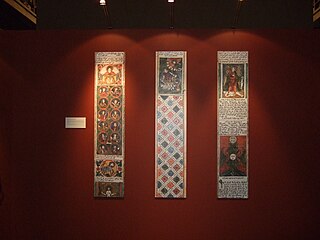 W
WAfter the introduction of movable printing type to Europe by Johannes Gutenberg in Germany, Armenians from throughout the diaspora began to publish Armenian-language books. The first book which had Armenian letters was published in Mainz (Germany) in 1486. The first Armenian book to be published by the printing press was Urbatagirq—Book of Friday prayers—which was published by Hakob Meghapart in Venice in 1512.
 W
WThe Avedis Zildjian Company, simply known as Zildjian, is a musical instrument manufacturer and the largest cymbal and drumstick maker in the world. The company was founded in Constantinople by Avedis Zildjian in 1623, and is now based in Norwell, Massachusetts. Zildjian is one of the oldest manufacturers of musical instruments in the world. Zildjian sells cymbals, drumsticks, percussion mallets and other drum accessories under the Zildjian, Vic Firth and Balter Mallet brands.
 W
W"Free and independent Artsakh" is the national anthem of the de facto independent Republic of Artsakh.
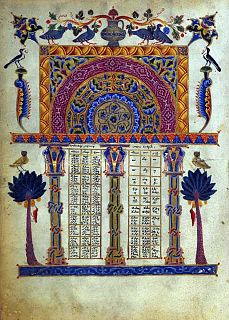 W
WThe Armenian Bible is due to Saint Mesrob's early-5th-century translation. The first monument of Armenian literature is the version of the Holy Scriptures. Isaac, says Moses of Chorene, made a translation of the Bible from the Syriac text about 411. This work must have been considered imperfect, for soon afterwards John of Egheghiatz and Joseph of Baghin were sent to Edessa to translate the Scriptures. They journeyed as far as Constantinople, and brought back with them authentic copies of the Greek text. With the help of other copies obtained from Alexandria the Bible was translated again from the Greek according to the text of the Septuagint and Origen's Hexapla. This version, now in use in the Armenian Church, was completed around the year 434.
 W
WThe term Armenian carpet designates, but is not limited to, tufted rugs or knotted carpets woven in Armenia or by Armenians from pre-Christian times to the present. It also includes a number of flat woven textiles. The term covers a large variety of types and sub-varieties. Due to their intrinsic fragility, almost nothing survives—neither carpets nor fragments—from antiquity until the late medieval period.
 W
WThe emblem of the Republic of Artsakh consists of an eagle above which is an ornamented crown. On the chest of the eagle is a shield with a panorama of a mountain range and under it a vertically set Flag of Artsakh. Over this are the two stone heads of "Granny and Gramps" from the We Are Our Mountains monument in Stepanakert, the capital of Artsakh. The eagle's feet clutch various agricultural products including wheat and grapes. The outer rim is made up of a golden circular ribbon bearing inscription "Լեռնային Ղարաբաղի Հանրապետություն-Արցախ" in Armenian.
 W
WDadivank, or Khutavank, is an Armenian monastery in the Kalbajar District of Azerbaijan. It was built between the 9th and 13th centuries.
 W
WYarkhushta is an Armenian folk and martial dance associated with the highlands of the historical region of Sassoun in Western Armenia. Yarkhushta belongs to a wider category of Armenian "clap dances". The dance is performed by men, who face each other in pairs. The key element of the dance is a forward movement when participants rapidly approach one another and vigorously clap onto the palms of hands of dancers in the opposite row.
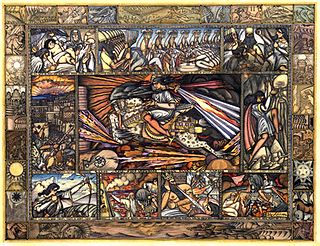 W
WDaredevils of Sassoun is an Armenian heroic epic poem in four cycles (parts), with its main hero and story better known as David of Sassoun, which is the story of one of the four parts.
 W
WDavid of Sassoun is the main hero of Armenia's national epic Daredevils of Sassoun, who drove Arab invaders out of Armenia.
 W
WHoly Savior Cathedral, commonly referred to as Ghazanchetsots (Ղազանչեցոց), is an Armenian Apostolic cathedral in Shusha, known to Armenians as Shushi, in Azerbaijan. It is the cathedra of the Diocese of Artsakh of the Armenian Apostolic Church.
 W
WGtichavank is a 13th-century Armenian Apostolic monastery located in the Tugh village of Azerbaijan.
 W
WGusans were creative and performing artists - singers, instrumentalists, dancers, storytellers, and professional folk actors in public theaters of Parthia and ancient and medieval Armenia.
 W
WH-Pem is a collaborative English-language Armenian cultural online platform and publication established by Hamapem of the Hamazkayin Armenian Educational and Cultural Society. Launched and made available to the public on May 13, 2019, h-pem's mission is to reach Armenian communities around the world and help Armenians—particularly Armenian youth—(re)connect with their homeland and culture in new, creative, and cooperative ways.
 W
WHamazkayin, short for Hamazkayin Armenian Educational and Cultural Society, is a major cultural organization of the Armenian Diaspora, with a presence in every significant Armenian community worldwide. In addition to organizing cultural events in local Armenian communities, the Hamazkayin runs three schools, publishes books through its printing press, maintains bookstores, publishes a monthly literary magazine, Pakin, organizes the Hamazkayin Forum and has established H-Pem of their Hamapem establishment. Hamazkayin enjoys the support of a wide segment of the Armenian community and encourages active participation to the events sponsored by the community. Hamazkayin sponsors and organizes many cultural events, such as concerts by renowned artists, scientific seminars, film festivals, literary lectures and book reviews. In the United States, the Hamazkayin Armenian Educational and Cultural Society was established as a non profit organization in 1970.
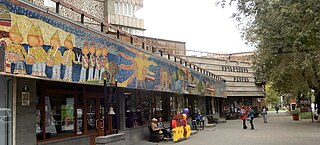 W
WOfficially the Yerevan State Puppet Theatre named after Hovhannes Tumanyan, is a puppet theatre in Yerevan, Armenia. It was opened on 1 June 1935 by director Sofia Bejanyan, painter Gevorg Arakelyan, actors Pavlos Boroyan and Araksia Arabyan. The first director of the theatre was Varia Stepanyan. Later in 1938, the theatre was renamed after Hovhannes Tumanyan.
 W
WSaint John the Baptist Church, commonly known as Kanach Zham, is an Armenian Apostolic church in Shusha, known to Armenians as Shushi, in Azerbaijan. Kanach Zham is located just uphill from the Ghazanchetsots Cathedral.
 W
WThe Karabakh carpet is one of the varieties of carpets of Transcaucasia, made in the Karabakh region of modern-day Azerbaijan. Karabakh carpet making was added to UNESCO's Representative Masterpiece of Intangible Heritage as part of Azerbaijani Carpets.
 W
WKarmravank is an abandoned 10th century Armenian monastery in the Vaspurakan province of historic Armenia. It was founded by King Gagik I (908-943) of the Artsruni dynasty. It is located 12 kilometers west-northwest of Akhtamar Island.
 W
WKatarovank is an Armenian Apostolic monastery in the Khojavend District of Azerbaijan. It is located close to the village of Hin Tagher. The monastery was founded in the 4th century, but the present structure was completed in the 17th century.
 W
WOfficially National Children's Library named after Khnko Aper is a national children's library in Yerevan, Armenia. It was founded in 1933 and renamed after the famous children's writer Khnko Aper after his death in 1935. Since 1980, the library has been located on Teryan Street in Kentron district, next to the Swan Lake of the Opera House. The architects of the library building were Levon Ghulumyan and Rouzan Alaverdyan. The library is home to a collection of 500,000 books. It has a large reading room with a capacity of 100 seats.
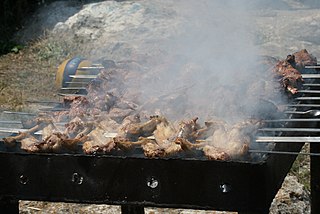 W
WKhorovats is a barbequed Armenian meat kebab. The meat may be marinated before grilling, but it does not have to be. It can be made with lamb, pork, beef, chicken, or even veal. This is generally a dish reserved for "festive occasions".
 W
WThe Matenadaran, officially the Mesrop Mashtots Institute of Ancient Manuscripts, is a museum, repository of manuscripts, and a research institute in Yerevan, Armenia. It is the world's largest repository of Armenian manuscripts.
 W
WMatryoshka dolls are a set of wooden dolls of decreasing size placed one inside another. The name matryoshka, literally "little matron", is a diminutive form of the Russian female first name "Matryona" (Матрёна) or "Matryosha".
 W
WThe Melikdom of Kashatagh was an Armenian melikdom (principality) which existed in the 15th-18th centuries. It was located along the Hakari River, on the southeastern section of the modern border of Armenia and Azerbaijan. The residences of the Meliks were located in the villages of Kashataghk and Khnatsakh, in the west of the present Lachin District of Azerbaijan and the east of the present Syunik region of Armenia respectively.
 W
WMusic of Armenia is an organization established in October 2008 in the UK but is currently based in Armenia as an NGO. Its principal activities are online Armenian music and musician promotion, and artist, projects and events management. To date it has promoted a large number of Armenian musicians and created awareness about Armenian music and culture internationally. Its services are free for the musicians and the public. As of 2015 it has been actively engaged in organizing music festivals.
 W
WThe National Archives of Armenia are the national archives of Armenia. The agency was officially founded in 1923. The headquarters are located in Yerevan, with regional branches in other cities.
 W
WThe origin of the National Chamber Orchestra of Armenia (NCOA) dates back to the Soviet era. It was founded by the violinist Zareh Sahakiants as the Armenian State Chamber Orchestra in 1962. In 1997 it was merged with the Yerevan Chamber Orchestra to form the new NCOA. As of September 2010 the Principal Conductor and Music Director is Vahan Mardirossian.
 W
WThe National Library of Armenia is a national public library in Yerevan, Armenia. It was founded in 1832 as part of the state gymnasium-school of Yerevan. It is the official cultural deposit for the entire republic.
 W
WArmenian nationalism in the modern period has its roots in the romantic nationalism of Mikayel Chamchian (1738–1823) and generally defined as the creation of a free, independent and united Armenia formulated as the Armenian Cause. Armenian national awakening developed in the 1880s in the context of the general rise of nationalism under the Ottoman Empire. The Russian Armenia followed with significant causes. The Armenian Apostolic Church has been a great defender of Armenian nationalism, with leaders like Khrimian Hayrik who devoted his life to the peasantry. The establishment of modern Armenia (1991) and Armenian social fabric becoming more complex gradually decrease the political influence of Hay Dat and shifted towards a modern Armenian nationalism modeled as a liberal nationalism. On the other hand, the Armenian diaspora have "diaspora nationalism," which maintain that the threat of assimilation rather than economic advantage.
 W
WNor Serount Cultural Association is an Armenian cultural organization with several branches throughout the world. First established in 1954 in Beirut, Lebanon, the association is a cultural branch of the Social Democrat Hunchakian Party. Its founding members were Manuel Atamian, Hrant Kankrouni, Sarkis Khayian, Kapriel Moloyan, Jirair Nayiri, Hagop Norashkharian (Norouni), and Bebo Simonian. The organization aims to promote and preserve Armenian culture in the Armenian diaspora. Some of its activities include folk dancing, radio stations, book presentations, and art exhibitions. Considered one of the leading Armenian cultural associations in the Armenian Diaspora, the organization has numerous branches throughout the world including Aleppo, Damascus, Cairo, London, Sydney, Toronto, Montreal, Los Angeles, and others.
 W
WNshkhar is a bread given to churchgoers after the Holy Badarak in the Armenian Church.
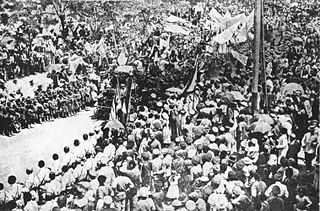 W
WRepublic Day is a national holiday in Armenia marking the anniversary of the First Armenian Republic in 1918. It is commonly celebrated with fireworks, concerts, torchlight marches, parades, and parties. It is considered to be the national day of Armenia.
 W
WSaint Hripsime Church, is a working Armenian church located in Yalta on the Crimean peninsula and completed in 1917.
 W
WSaint Sarkis Monastery is a large monastic complex, 45 by 54 metres just outside the village of Ushi in the Aragatsotn Province of Armenia. It sits at the far side of what was once a settlement site from the 3rd - 1st millennia BC. The monastery is a well known pilgrimage site, and was one of the centers of spiritual education in Armenia. Many fine examples of early Armenian architecture from various periods can be seen around the complex.
 W
WSan Lazzaro degli Armeni is a small island in the Venetian Lagoon which has been home to the monastery of the Mekhitarists, an Armenian Catholic congregation, since 1717. It is the primary center of the Mekhitarists, while the Mekhitarist Monastery of Vienna is their primary abbey.
 W
WOfficially State Russian Drama Theatre named after Konstantin Stanislavski, more commonly Stanislavski Russian Theatre, is a state theatre in the Armenian capital of Yerevan located on Abovyan Street in the central Kentron district of the city, next to Charles Aznavour Square. It was opened in 1937 and named after the Russian actor and theatre director Constantin Stanislavski since 1938. The theatre director is Alexander Grigoryan since 1965.
 W
WThe Gabriel Sundukyan State Academic Theatre, founded on February 25, 1922 in Yerevan, is the oldest modern theatre in Armenia.
 W
WTigranakert or Tigranavan is one of the four cities established by Tigranes the Great, emperor king of Armenia, carrying his name. The one at Nakhchivan served as a sitting city for Tigranes' sister Tigranouhi.
 W
WTogh’s Melikian Palace, also known as the Palace of Melik Yegan or the Palace of Dizak Meliks, located in the central part of the Tuğ village in the Khojavend district of Azerbaijan. According to the inscription found on the palace, the structure was built in the early 1700s by Melik Yegan, one of the various Armenian Meliks of Dizak. Prior to the 2020 Nagorno Karabakh war, the property was maintained by a descendant of Melik Yegan, Alexander Yeganyan.
 W
WVan cats are a distinctive landrace of the domestic cat found in the Lake Van region of eastern Turkey. They are relatively large, have a chalky white coat, sometimes with ruddy coloration on the head and hindquarters, and have blue or amber eyes or have heterochromia. The variety has been referred to as "the swimming cat", and has been observed to swim in Lake Van.
 W
WVankasar Church is a 7th-century Armenian church located in Agdam District of Azerbaijan.
 W
WVardavar or Vartavar is an Armenian festival in Armenia where people of social groups drench each other with water. The festival is also observed by Hemshin people of Turkey, a Muslim majority group closely related to Armenians.
 W
WWe Are Our Mountains is a large monument north of Stepanakert, the capital city of the self-proclaimed Republic of Artsakh, internationally recognised as part of Azerbaijan. The sculpture, completed in 1967 by Sargis Baghdasaryan, is widely regarded as a symbol of the Armenian heritage of the region. The monument is made from volcanic tufa and depicts an old man and woman hewn from rock, representing the mountain people of Karabakh. It is also known as "tatik-papik" (տատիկ-պապիկ) in Armenian, which translates as "Grandmother and Grandfather". The sculpture is prominent in Artsakh's coat of arms.
 W
WYerits Mankants Monastery is a 17th-century Armenian monastery de jure in the Tartar District of Azerbaijan, but de facto in the Martakert Province of the self-proclaimed Republic of Artsakh. It is the most notable example of monasteries built during the late Middle Ages in Nagorno-Karabakh, after an interruption in church building from the 14th to 16th centuries. Yerits Mankants monastery was built around 1691 in the historical county of Jraberd. The monastery was established by the feudal family of Melik-Israelians, Lords of Jraberd, with an apparent purpose to rival the Holy See of Gandzasar and its hereditary patrons the Hasan-Jalalians, Lords of Khachen.
 W
WZeytuntsyan is an Armenian surname likely originating from the Mediterranean region. The prefix, Zeytun-, means "olive" in some languages, it is also the name of an Armenian township in historic Western Armenia in the Northeastern Mediterranean Basin.